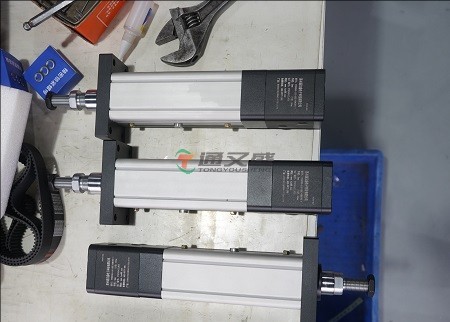1. Clarify the Load Capacity of the Small Electric Cylinder
In heavy-duty applications such as automotive presses, where small electric cylinders need to push molds weighing several tons, it is essential to select products with matching load capacity. Otherwise, it may lead to damage to the small electric cylinder or failure to operate normally.
2.Pay Attention to the Strike of the Small Electric Cylinder
In industrial automated production lines, the conveying distance of workpieces determines the stroke requirement of small electric cylinders. If the stroke is too short, it cannot meet production requirements; if the stroke is too long, it will increase costs and occupy additional space.

The speed and acceleration requirements of small electric cylinders are equally important
In high-speed 3C product production lines, small electric cylinders need to respond quickly and achieve high-speed movement to improve production efficiency. However, in scenarios that require high motion stability—such as medical equipment—acceleration must be controlled within a reasonable range to avoid impacts on equipment and patients.
4.Evaluate Installation Methods and Space Constraints
Different application scenarios may have different requirements for the installation method of small electric cylinders, such as horizontal installation, vertical installation, and flange installation. The appropriate installation method should be selected based on the equipment structure and spatial layout. In smart home devices, due to limited space, small electric cylinders need to be designed to be compact and small to adapt to the home environment.
5.Focus on the Control Method
Common control methods include open-loop control and closed-loop control:
Closed-loop control can real-time monitor the position and status of the small electric cylinder to achieve more precise control, making it suitable for scenarios with high precision requirements—such as medical equipment and precision assembly links in industrial automation.
Open-loop control is relatively simple and low-cost, and is suitable for scenarios with low precision requirements.